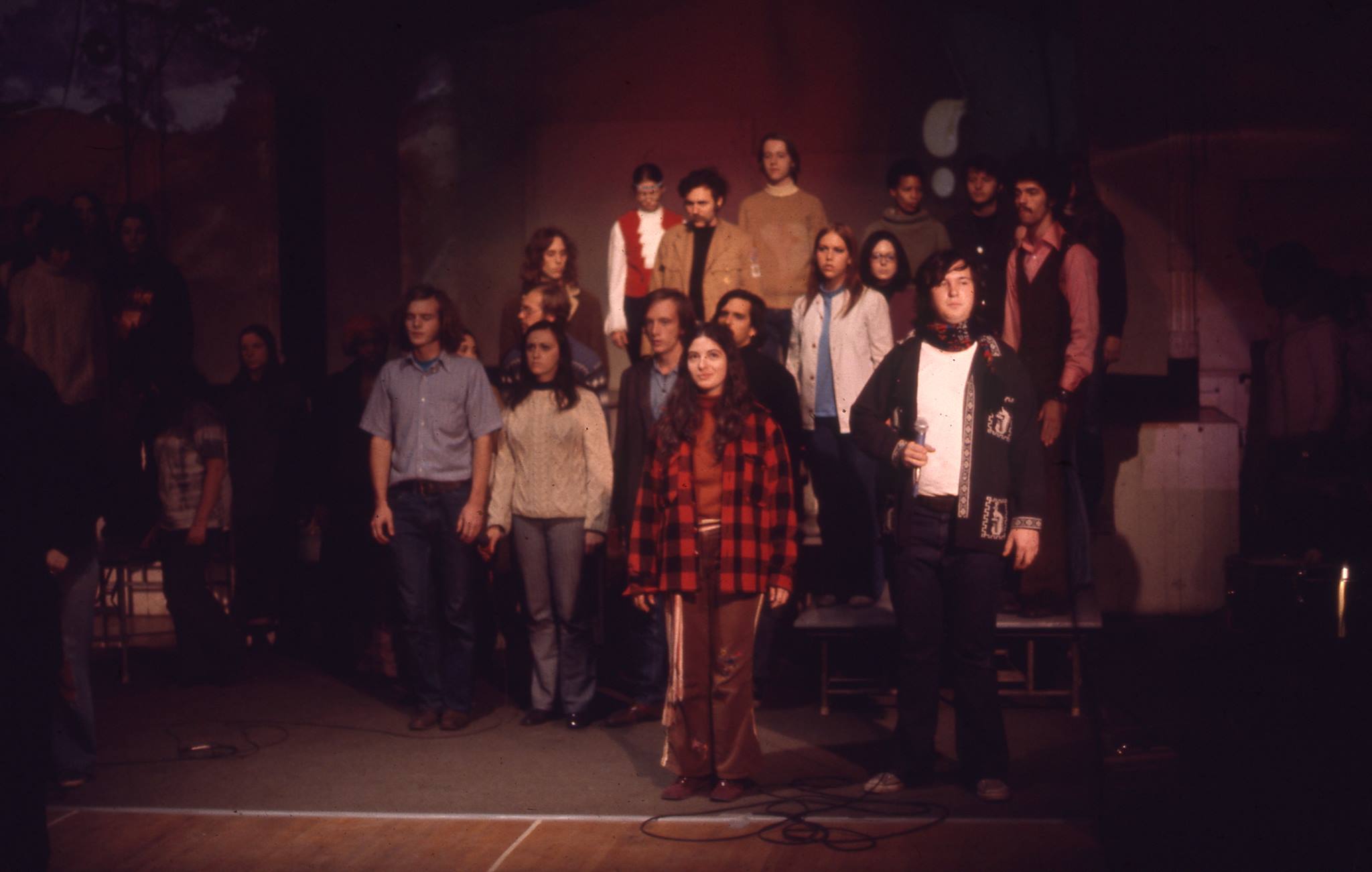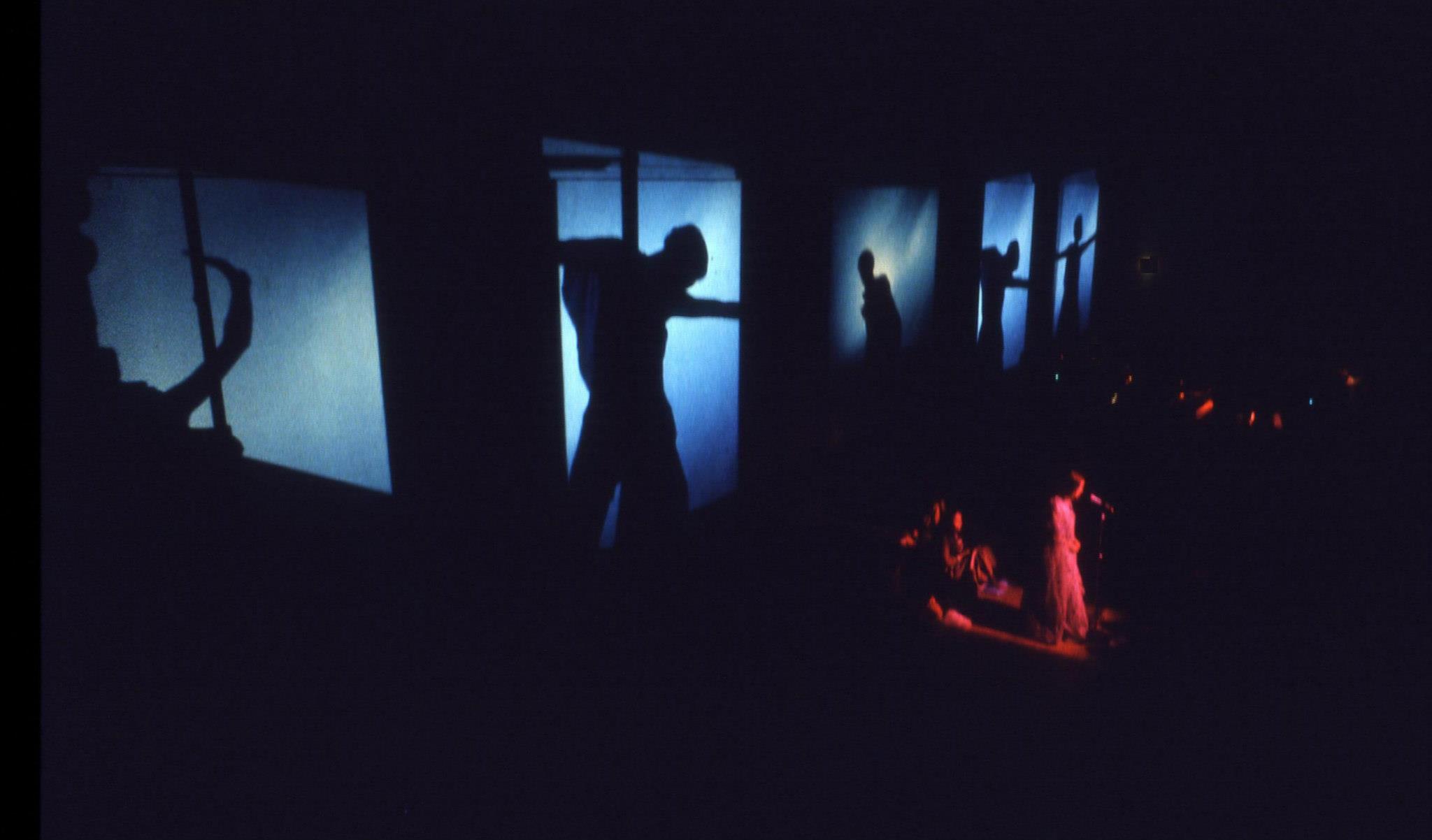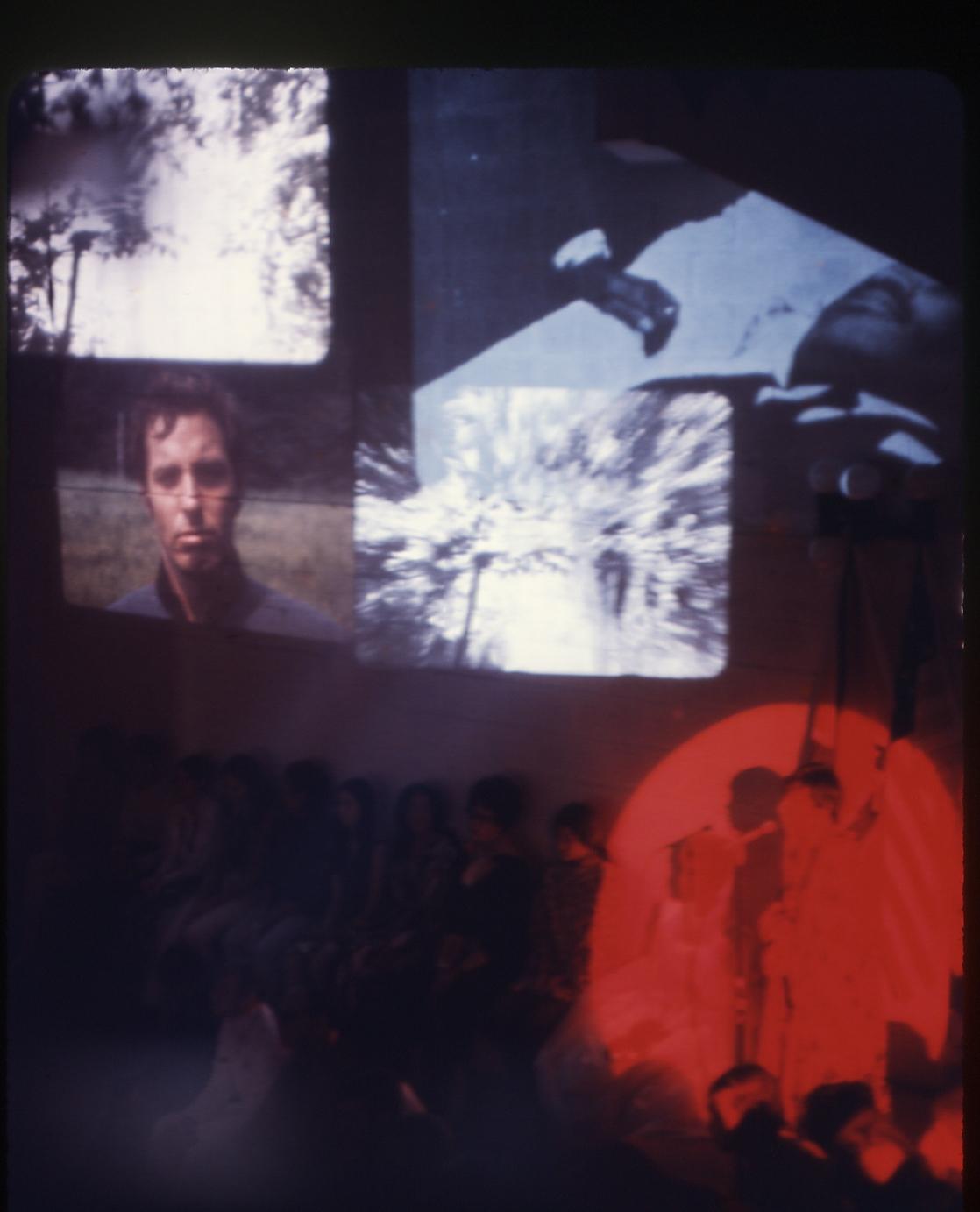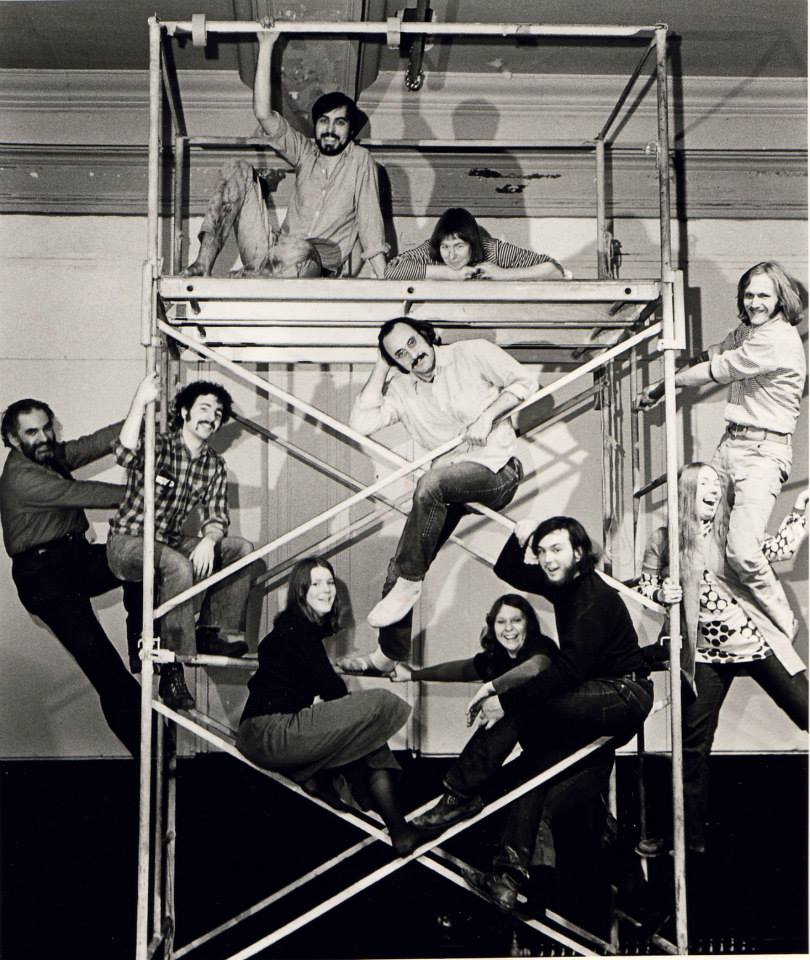Editor's note: We initially described The Civil War as a rock opera. But some considered it to be a rock cantata.
When Doug Kassel was a teenager, he joined the Free Theater, a Chicago theater group that put on non-traditional, avant-garde theatrical productions from 1968 to 1974. Like its name suggests, the shows were free.
The Free Theater was created during a historic time in Chicago and the country — a period marked by the civil rights movement and the war in Vietnam. The ensemble stood out for its open door policy (no auditions required) and for putting on rock music plays with strong political themes making theater more appealing to young people looking for a creative outlet.

The Free Theater, which operated with the support of Columbia College, was part of a movement of small theater groups that helped expand theater outside the Chicago Loop in the ’60s and ’70s.
At first, the Free Theater performed in a building scheduled for demolition known as The Theater at 1848 N. Wells in the Old Town neighborhood. They also performed in other non-traditional spaces including a church before eventually getting a space at Columbia College.
Doug Kassel shared so many stories with his partner, Lisa Patten, about his time with the Free Theater that Lisa wanted to know more about its history and its legacy in Chicago.
So Curious City spoke with former performers and crew members about what it was like to be a part of this ensemble. And we learned that the Free Theater wasn’t just about the performances. It had a mission to make theater inclusive, accessible and responsive to the community. Today, theater groups like CIRCA Pintig, the Free Street Theater and others continue that mission, bringing shows to neighborhoods all across Chicago and providing a space for anyone to join the show.

What was the Free Theater?
The Free Theater was known for its free theatrical productions that took on the important political and social issues of the moment. William Russo, chair of the music department at Columbia College, founded and led the program. He was a well-known composer, conductor and jazz musician.
Russo wrote most of the productions the Free Theater performed. He was influenced by the style and techniques of other contemporary theater groups, including two groups founded by Paul Sills, the Second City and the Story Theatre. The Second City, a group the Free Theater shared its first brick-and-mortar space with in Lincoln Park, was particularly influential for its improvisational style.
Russo was a major force behind the success of the Free Theater, according to Kassel. “He was a very powerful presence,” Kassel said.
“He [was] definitely a leader. And he [could] be a little scary sometimes,” he added, remembering a time before one of the shows when Russo released a big scream to get the band to come in at the same time. “[Russo] would get himself revved up,” Kassel continued. “Made the hair in the back of our heads stand up.”
Albert Williams, associate professor of instruction at Columbia College, joined the Free Theater in 1970 when he was 19. He started out as a performer but eventually became a writer.
The Free Theater’s productions “rarely had dialogue,” Williams said. The shows featured singers and multimedia elements including eight-millimeter movies projected onto bedsheets and sometimes even included "psychedelic light shows."
“One of the most interesting aspects of being in the company was watching the process of recruiting audience members who came to see the show,” recalled Jos Davidson, who played fender bass for the Free Theater from 1968-1973. “[We] invit[ed] them to come to a Free Theater rehearsal to see if they could become members of the company who were on stage doing simple percussion accents as part of the overall production,” she said. “We gained several company members by doing that.”
New members didn’t need much experience. There were no auditions and participants got their assignments according to their abilities. Everyone had multiple roles.
“We sang, we performed but we also laid down the lighting cords,” Williams said. “We hung the curtains for the projectors. We cleaned the house afterward, we cleaned the bathrooms.”
And none of the performers were paid. But they did pass around a hat at the end of each performance to collect donations.
“I would grab a mike and give what was known as ‘the rap.’ I would explain our need for finances. Then I would go to the back exit and stand there with the top of a trap box and make eye contact with everyone leaving. People put in anything from change to singles and up to $20s. We would take about $200 to $350 per performance,” said Jerry Yanoff, who was often in charge of collecting donations.

Productions like The Civil War and Liberation took on the politics of the day
The Free Theater offered a space for people, mostly college-aged, to express their feelings and frustrations about racial inequality and the war in Vietnam. “The early Free Theater shows were all about the Vietnam War and civil rights. They were very political,” Williams said.
Back then, Kassel said, the line between reality and theater was pretty loose.
“The Theater would be doing all this stuff about revolution and war and they'd be using this space to talk about how to keep the police under control,” Kassel said, adding that there were town hall meetings after some shows, “[w]here people would get up and speak about, you know, about everything that was going wrong, or people that have gotten beaten up.”
After Fred Hampton, chairman of the Illinois Chapter of the Black Panther Party, was assassinated in 1969, the Free Theater announced a special performance to help fund an investigation into his death.
Many of the Free Theater’s shows drew connections between past and present situations. That includes shows like The Civil War, a rock opera that created a parallel between the Civil War in the 1860s and the cultural turmoil of the late 1960s.
“Bill [William Russo] taught me my permanent skepticism of the establishment,” said Bob Boldt, who produced the visuals for many of the Free Theater’s performances.
Another memorable performance was the show Liberation, written by Russo, which was about three political martyrs: Socrates, Thomas Paine and Che Guevara.
Not all the Free Theater’s productions were explicitly political. Aesop’s Fables, a comedy based on the stories originally thought to have been written by the Greek storyteller Aesop, took the moral tales told by animals and set them to music with a libretto by Jon Swan. According to Williams, Aesop’s Fables was a series of 11 “mini rock operas” written in the Story Theatre style, and was a family-friendly production that drew audience members of all ages.

The shows resonated. The issues Free Theater took on and the “scruffy, free-form quality” of their shows drew huge crowds, Kassel said. “We used to have lines around the block,” he added. “And even though it was free, we did get a lot of repeat business, and people would just get addicted to coming to the shows.”
The Free Theater’s success went beyond Chicago. They performed in other states and even took a production of The Civil War to London.
The end of the Free Theater
But in 1974 the Free Theater stopped making shows. Its cast members moved on to do other things. Making Free Theater productions was a big commitment, Williams and Kassel said.
“A lot of us were not getting paid. I mean we were working for free,” Williams said.
Russo, the group’s founder, had other projects involving his music career, which included composing other musical productions.
Many of the performers who were involved with the Free Theater went on to use the skills they developed in their professional and personal lives. “The power of the music, visuals, dance and political messages touched me to my core,” recalled Barbara Dulski, who joined the Free Theater in 1968. “I went on to compose my own music and at 74 can proudly say I am still performing inspiring work.”
But while Free Theater was around only for six years, Albert Williams of Columbia College said it helped shape Chicago’s rich theater scene today. “I think that the Free Theater and that off-Loop theater movement did pave the way for other theater companies that are still functioning today,” he said.
In the mid-1970s, the Chicago theater scene experienced a second wave of the off-Loop theater movement with the birth of companies like Victory Gardens Theater and the Steppenwolf Theatre.
Today, according to Williams, Chicago is a theater capital, with Tony Award-winning productions and several hundred theater companies in town. But over the years, he said that the grassroots theater scene he was part of during his younger years has changed.
Many theater companies have centered on the North Side of Chicago and the scene has become more focused on entertainment, Williams said.
“It became much more about professionalism and slickness,” he said. “And maybe without trying to become this way, maybe it became a little bit less accessible.”
So what happened to the Free Theater’s mission of accessibility — of being open to the public, with shows available for free or at a low cost?
Well, there are several companies still doing this kind of work. But many people we spoke with who work in these grassroots groups say it’s not always easy to keep these small theater companies going. Money is always an issue that creates other challenges in areas like marketing or even finding spaces to perform.
Despite all of this, many small theater companies have managed to survive for years and are still bringing theater to residents who might not otherwise have access to shows.
Curious City put together a list of six community-based theater companies that are bringing theater to residents in different parts of the city or doing donation based or free shows.
Free Street Theater is known for putting on shows all around Chicago. It got its start in 1969 with a flatbed truck that traveled across several neighborhoods and it’s been putting on resident-led, free productions ever since. Aside from its permanent location at 1419 W. Blackhawk, Free Street Theater has been using a storefront in Back of the Yards on the South Side– a working-class mostly Latino immigrant neighborhood. Recent Productions include Hood Moms, a series of stories written by women about their experiences growing up and raising their kids on Chicago’s South Side as well as an interactive gallery showcasing visual artists, storytellers, poets, and dance groups across Chicago. CIRCA Pintig is an organization that uses theater to address issues of inequality and identity around the Filipino and other Asian American immigrant experience in the United States. CIRCA stands for Center for Immigrant Resources and Community Arts and Pintig is the Filipino word for heartbeat. CIRCA Pintig has been creating work for more than 30 years. Shows usually cost about $15, students and seniors get discounts. Broken Nose Theatre got its start in 2012. Part of Broken Nose’s mission is to amplify the voices of underrepresented people while making accessible theater through its pay-what- you-can model. Economic accessibility is also one of the company’s core values. Broken Nose performs at The Den Theater in Wicker Park. The company has a small literary team, but it accepts writing samples or play submissions from established and newly emerging writers. The Albany Park Theater Project has been putting on shows in Chicago for 25 years. It’s ensemble includes teen and adult members who collectively work on stories about the immigrant experience and cultural identity in the U.S. Some of Albany Park Theater Project’s performances in recent years include Ofrenda and Learning Curve, a show about being a Chicago Public School student and teacher. Most recently, the Albany Park Theater Project put on a mail-in production called Truly Yours– a play delivered in the form of written letters about a teen’s experience navigating relationships and issues of cultural identity during the pandemic. Most Albany Park Theater Project’s shows are low-cost, but some can run for up to $40. The company often gives out free tickets to those who can’t afford the shows. Red Tape Theatre was founded more than 14 years ago with the goal of eliminating the economic barriers that keep residents from going to the theater. Red Tape Theatre shows often include visuals reflecting the current cultural, social and political climate, allowing audiences to have a unique thought-provoking experience. One of Red Tape Theatre’s recent productions is a show called My Name is Inanna, the story of a middle eastern woman and poet in search of her identity and freedom as she starts a new life in the United States. Most Red Tape Theater tickets are free. The Urban Theater Company Based in Humboldt Park, the company was founded in 2005 with the goal of raising awareness about social issues faced by the diverse communities it represents. One of Urban Theater’s recent shows was called Brujaja, a filmed theatrical experience which tells the story of a witch who uses her ancestral power to fight against oppression. Tickets range from $10 to $35.
Thanks to Lisa Patten for her question about the history of the Free Theater.
Adriana Cardona-Maguigad is Curious City's reporter. Follow her on Twitter @AdrianaCardMag.







